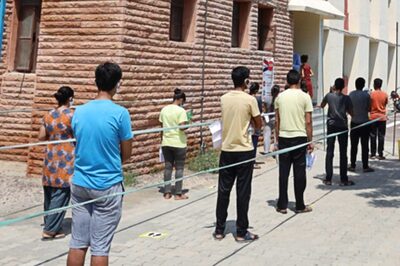
views
Mumbai: As Parliament was witnessing some angry protests over rising food prices on Tuesday, Reserve Bank of India (RBI) cautioned that inflation rate can soon balloon to 5 per cent, terming the current negative rate a "statistical" effect. It, accordingly, kept key rates unchanged in the quarterly update of its monetary policy for this fiscal.
"The immediate challenge for the central bank is to manage a balance between short-term compulsions of providing ample liquidity and potential build-up of inflationary pressure the way forward," Reserve Bank of India Governor D Subbarao said in the policy update.
This, he said, was the reason why he was leaving unchanged key policy rates like bank rate, repo rate and reserve repo rate, while keeping a close watch on the money supply, with a status quo on cash reserve ratio (CRR) and statutory liquidity ratio (SLR).
"It is worth reiterating that the Reserve Bank will maintain an accommodative monetary stance until there are definite and robust signs of recovery," Subbarao said, while predicting an economic growth of at least 6 per cent this fiscal, with an upward bias.
Subbarao, nevertheless, said there was still scope for commercial banks to cut their interest rates so that industry and households can borrow funds at lower rates.
In the policy unveiled by the central bank governor April 21, both the repo and the reverse repo rates were cut by 25 points each, even as CRR and SLR were left unchanged at 5 percent and 24 percent, respectively.
The repo rate, currently at 4.75 per cent, is the interest charged by the Reserve Bank on borrowings by the commercial banks. A reduction in the same lowers the cost of borrowings for commercial banks.
The reverse repo rate, currently at 3.25 percent, is the rate at which the central bank borrows money from commercial banks. A lowering of this rate makes it less lucrative for banks to park funds with the central bank.
Subbarao said the current negative inflation, based on the official wholesale price index, largely reflects the statistical effect of the high base of last year. "It should not be interpreted as structural deflation arising from demand contraction," he said.
"Food price inflation continues to remain elevated," he said. "The uncertain monsoon outlook could further accentuate food price inflation."
Reacting to the policy update, leading chambers like the Associated Chambers of Commerce and Industry (Assocham) said the measures announced on Tuesday were on expected lines as no changes were expected in key rates.
"The policy raises the inflation target to 5 per cent by March 2010, giving hope that stability in prices, especially of essential commodities and other articles, would return," said Assocham President Sajjan Jindal.
A day ahead of the review, the central bank had sharply raised its growth forecast for the country's economy to 6.5 per cent from its earlier projection of 5.7 per cent, but warned inflation could also move into higher territory.
The bank also said food prices – that are already high, particularly in the case of fruits, vegetables and lentils – were likely to move northward given the feeble progress of monsoons and rise in minimum support price paid to farmers for their crops.
"There are indications of inflation firming up by the end of the year due to the waning base effect of last year, increase in commodity prices, delayed progress of monsoon potentially driving up food prices," it said.
In Parliament, Opposition members in the Lok Sabha strongly protested what they called was gross inaction on the part of the Government in curtaining the price rise that is putting even some basic items like fruits, vegetables and lentils out of the people's reach.




















Comments
0 comment